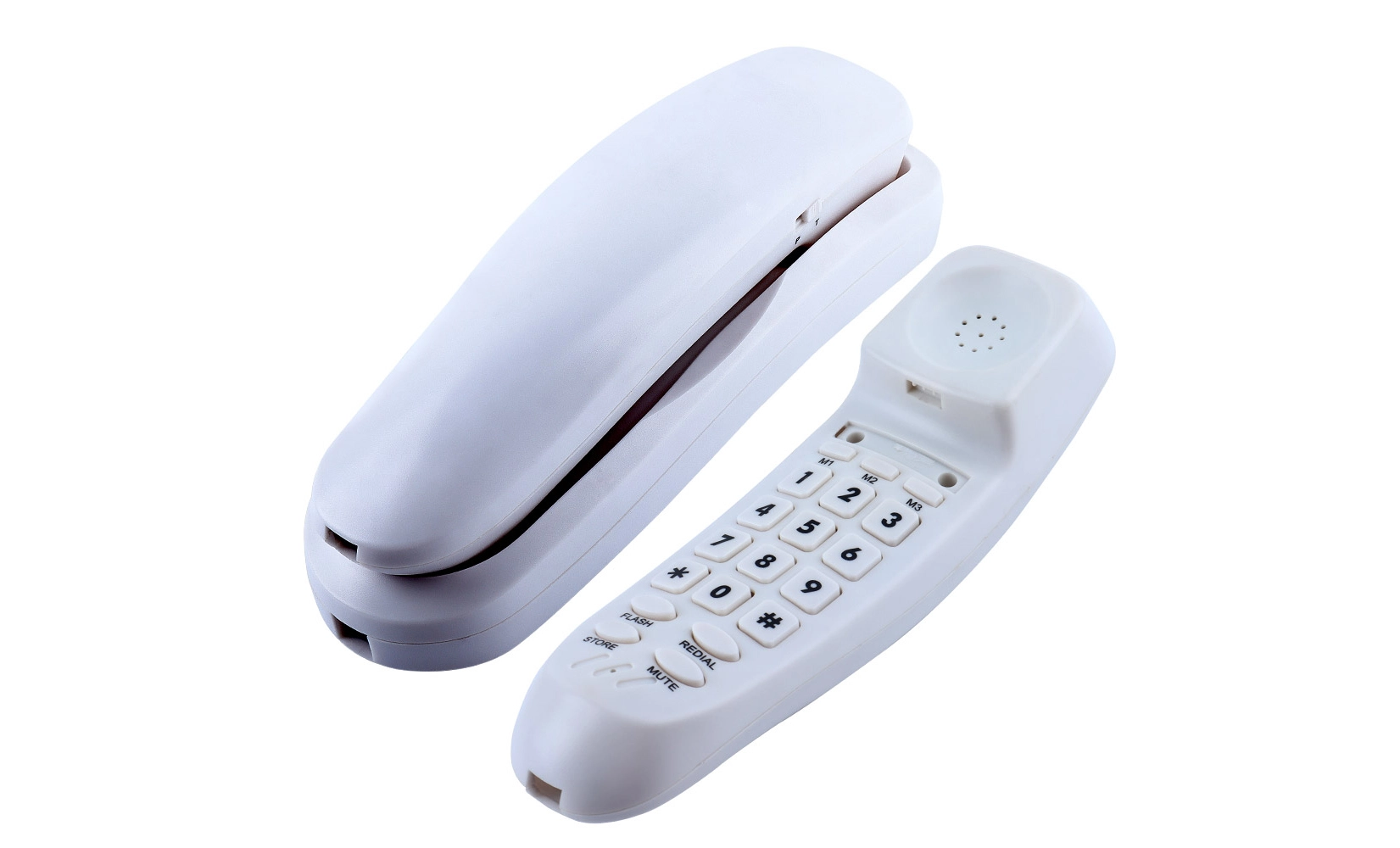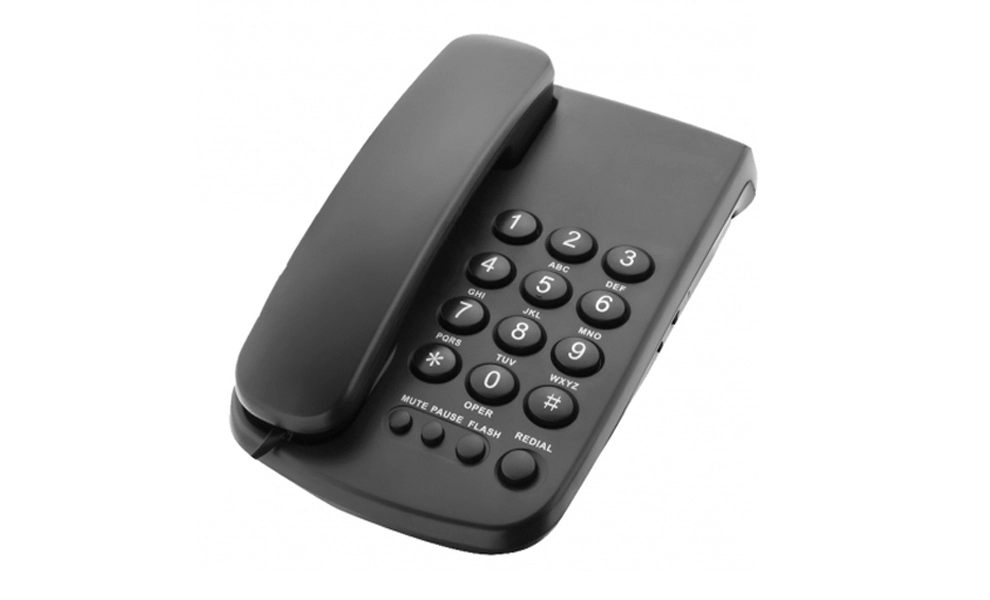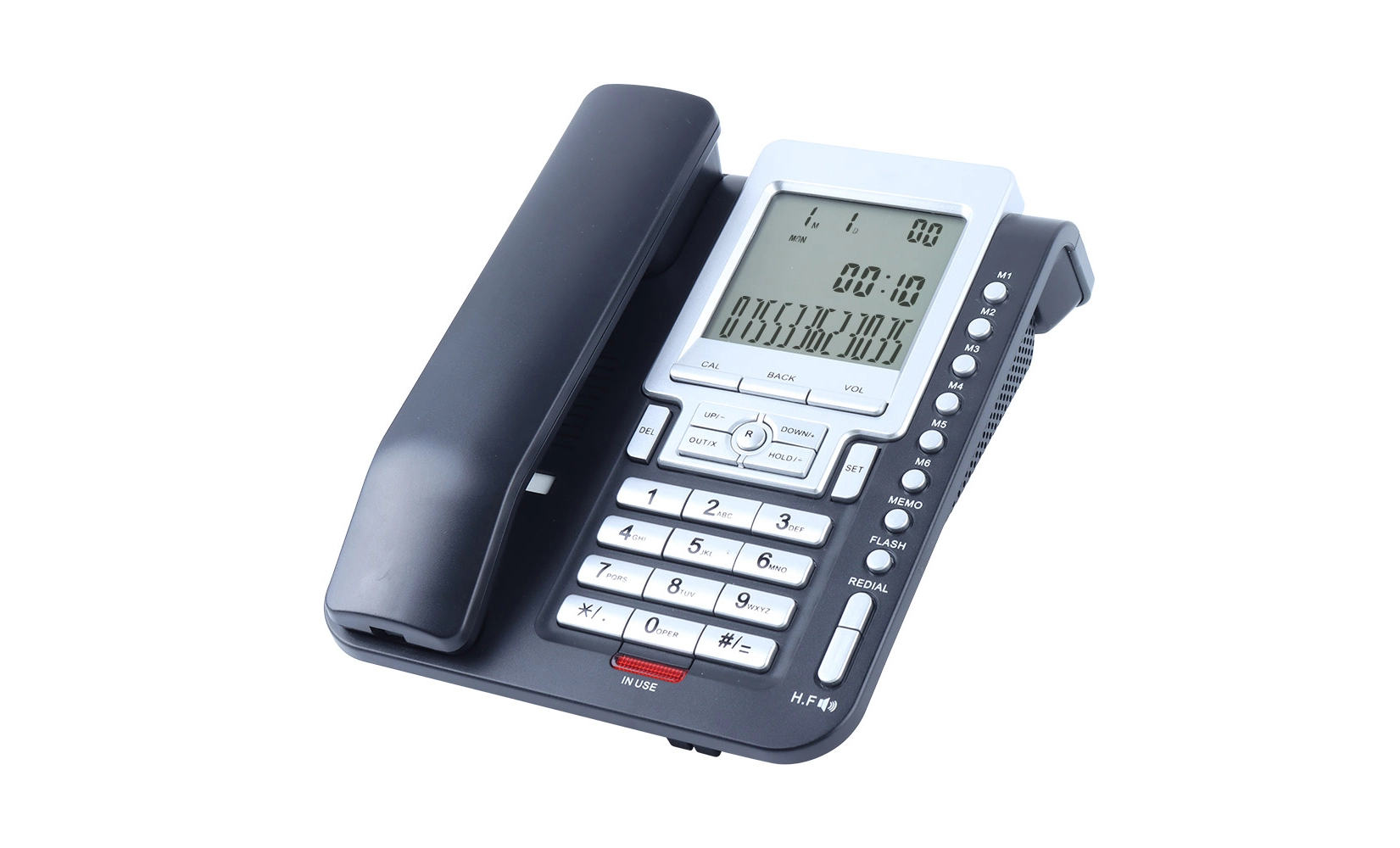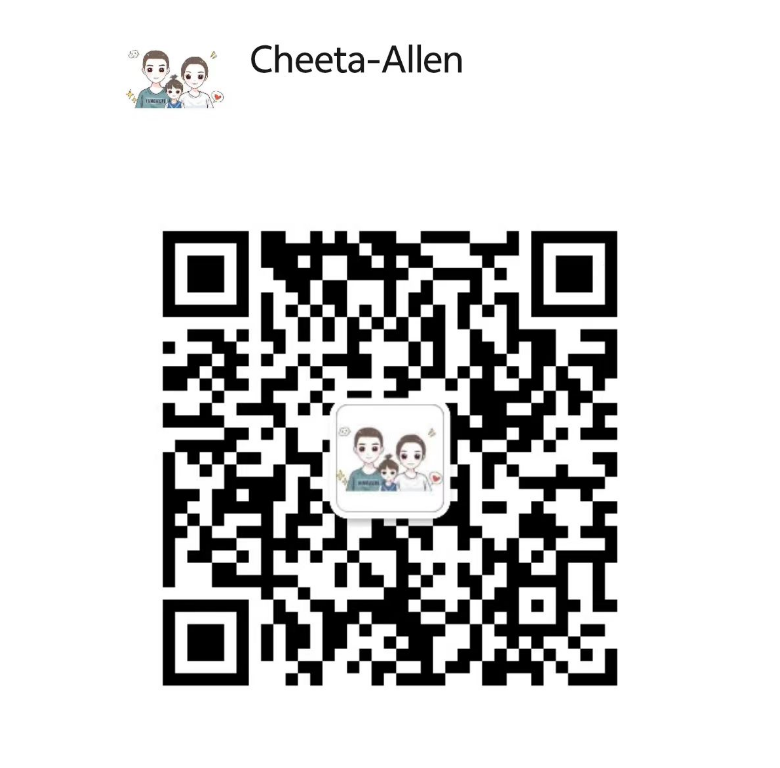A Simple Guide to Caller ID Telephones and Their Operation
 Caller ID telephones have revolutionized the way we handle incoming calls, offering a blend of convenience and security. These devices display the caller's number and sometimes name before you answer, allowing you to screen calls effectively. Operating a caller ID telephone is straightforward: when a call comes in, simply glance at the display to see who's calling. Most models store recent calls, letting you review missed calls later. With features like call blocking and large displays, caller ID phones cater to various needs, from busy offices to homes of older adults. Understanding how to use these features can significantly enhance your calling experience.
Caller ID telephones have revolutionized the way we handle incoming calls, offering a blend of convenience and security. These devices display the caller's number and sometimes name before you answer, allowing you to screen calls effectively. Operating a caller ID telephone is straightforward: when a call comes in, simply glance at the display to see who's calling. Most models store recent calls, letting you review missed calls later. With features like call blocking and large displays, caller ID phones cater to various needs, from busy offices to homes of older adults. Understanding how to use these features can significantly enhance your calling experience.
Understanding Caller ID Technology
Caller ID technology has become an integral part of modern telecommunications, offering users valuable information about incoming calls. This system works by transmitting data between the first and second rings of a telephone call, providing details about the caller before the recipient answers.
How Caller ID Works?
The process begins when a call is placed. The caller's information, typically including their phone number and sometimes their name, is sent along with the call signal. This data is transmitted through the phone network to the recipient's caller ID-enabled device. The receiving phone then decodes this information and displays it on its screen, usually between the first and second rings.
Most caller ID systems use one of two signaling methods: Frequency Shift Keying (FSK) or Dual-Tone Multi-Frequency (DTMF). FSK is more common and can transmit more detailed information, while DTMF is an older technology that's still used in some areas.
Types of Information Displayed
The information displayed on a caller ID telephone can vary depending on the device and the caller's settings. Typically, you can expect to see:
- The caller's phone number
- The caller's name (if available)
- Date and time of the call
- Call status (e.g., new call, return call)
Privacy Considerations
While caller ID offers many benefits, it's important to note that callers can choose to block their information from being displayed. This is often done by dialing a specific code before making a call, such as *67 in many areas of the United States. When a call is blocked, the recipient's caller ID display might show "Private," "Unknown," or "Blocked" instead of the caller's information.
Features and Functions of Caller ID Telephones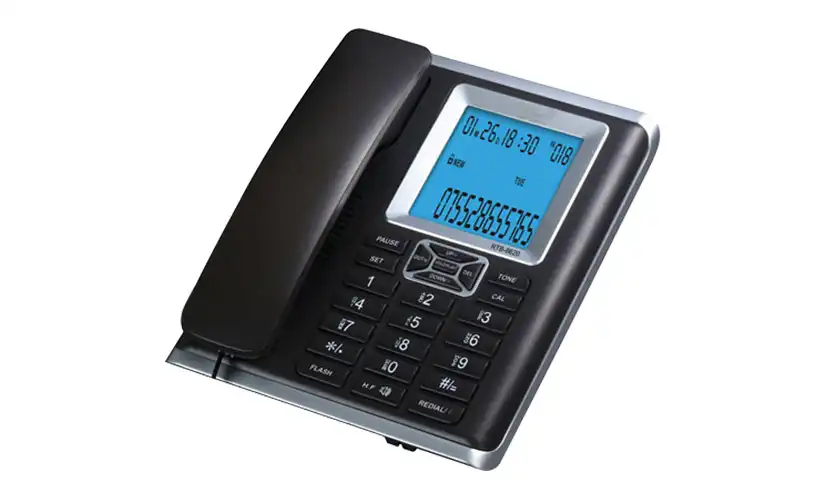
Caller ID telephones come packed with a variety of features designed to enhance user experience and call management. Understanding these functions can help you make the most of your device and improve your communication efficiency.
Display Capabilities
The heart of any caller ID telephone is its display. Modern devices often feature large, backlit LCD screens that provide clear visibility of caller information. These displays typically show:
- Caller's name and number
- Time and date of the call
- Number of new calls
- Battery life indicator (for cordless models)
Some advanced models even offer customizable displays, allowing users to adjust font size or change display colors for better visibility.
Call Log and Memory
Caller ID telephones usually include a call log feature, which stores information about recent incoming calls. This function allows users to:
- Review missed calls
- Check the time and date of received calls
- Redial numbers directly from the call log
The memory capacity varies between models, with some storing up to 100 or more call records. This feature is particularly useful for tracking communication history and managing callbacks efficiently.
 Call Blocking and Filtering
Call Blocking and Filtering
Many modern caller ID telephones offer call blocking capabilities, allowing users to filter out unwanted calls. This feature typically enables you to:
- Block specific numbers
- Silence calls from unknown numbers
- Create whitelists of approved callers
Some advanced models even integrate with online databases to automatically block known spam or telemarketing numbers, providing an additional layer of protection against nuisance calls.
Additional Features
Depending on the model, caller ID telephones may offer a range of additional features:
- Speakerphone functionality for hands-free conversations
- Intercom systems (for multi-handset cordless models)
- Voice mail integration
- Customizable ringtones for different callers or groups
- Phone book for storing frequently called numbers
Tips for Operating Caller ID Telephones Effectively
To maximize the benefits of your caller ID telephone, it's essential to understand how to operate it effectively. Here are some practical tips to help you make the most of your device's features and enhance your calling experience.
Setting Up Your Caller ID Phone
Proper setup is crucial for optimal performance of your caller ID telephone. Follow these steps:
1. Connect the phone to a power source and telephone line.
2. Set the date and time accurately to ensure correct call logging.
3. If your model requires it, subscribe to caller ID service through your telephone provider.
4. Familiarize yourself with the phone's menu system and settings options.
Remember to consult your device's user manual for specific setup instructions, as procedures may vary between models.
Managing the Call Log
The call log is a valuable tool for tracking your communication history. Here's how to use it effectively:
- Regularly review your missed calls to ensure you don't overlook important messages.
- Delete old entries to keep your call log organized and prevent memory overflow.
- Use the redial function to quickly return calls from the log.
- Take note of calling patterns to identify potential spam or unwanted calls.
Utilizing Call Blocking Features
Call blocking can significantly reduce unwanted interruptions. Here's how to make the most of this feature:
- Add persistent telemarketers or spam callers to your block list.
- Consider blocking private or unknown numbers if you frequently receive unwanted calls from these sources.
- Regularly review and update your block list to ensure it remains effective.
- If your phone supports it, enable automatic blocking of known spam numbers.
Customizing Your Caller ID Experience
Many caller ID telephones offer customization options to enhance usability:
- Adjust the display brightness and contrast for optimal visibility.
- Set distinctive ringtones for important contacts or groups.
- Organize your phone book for quick access to frequently called numbers.
- If available, customize the information displayed for each caller (e.g., nicknames or relationship).
Maintaining Your Caller ID Phone
Regular maintenance can ensure your caller ID telephone continues to function efficiently:
- Clean the display and keypad regularly to maintain clarity and responsiveness.
- For cordless models, follow proper battery care procedures to extend battery life.
- Keep the phone's software or firmware updated if your model supports it.
- Periodically check the phone line connection to ensure consistent performance.
Conclusion
Caller ID telephones have become an indispensable tool in our daily communication, offering a perfect blend of convenience and security. By understanding how these devices work, exploring their features, and learning to operate them effectively, users can significantly enhance their calling experience. From managing incoming calls with ease to blocking unwanted interruptions, caller ID technology empowers users to take control of their phone interactions.
As technology continues to evolve, we can expect even more advanced features to be integrated into these devices, further improving our ability to communicate efficiently and securely. Whether for personal use or in a business setting, mastering the use of your caller ID telephone can lead to more productive and pleasant phone interactions.
Easy-to-use caller ID phones with clear display | CHEETA
CHEETA, a professional analog telephone maker in Shenzhen, brings 18+ years of expertise to the caller ID telephone market. Our state-of-the-art 1,200㎡ factory, staffed by 100+ skilled workers and 10 senior engineers, produces 1,000 high-quality analog units daily. We pride ourselves on our rigorous 11-step inspection process, ensuring a failure rate below 1% and adherence to CE and ROHS standards. Our caller ID telephones feature large LCD screens, high-contrast displays, and backlit digits for easy viewing.
With capabilities like call storage, time/date display, and redial history, CHEETA phones are perfect for homes, hotels, and offices. Our commitment to innovation, coupled with full OEM/ODM customization options, allows us to meet diverse customer needs efficiently. Experience the clarity and reliability of CHEETA caller ID telephones. For more information, contact us at allen@cheeta.com.cn.

References
1. Jennings, L. (2018). "The Evolution of Caller ID Technology: From Novelty to Necessity." Telecommunications Review, 42(3), 78-92.
2. Smith, R. A., & Johnson, T. K. (2019). "Privacy Concerns in the Age of Caller ID: A Survey of Consumer Attitudes." Journal of Communication Technology, 15(2), 210-225.
3. Chen, H., & Wong, Y. (2020). "Enhancing User Experience in Caller ID Telephones: A Human-Centered Design Approach." International Journal of Human-Computer Interaction, 36(8), 723-739.
4. Thompson, E. L. (2017). "The Impact of Caller ID on Business Communication Efficiency." Business Communication Quarterly, 80(1), 55-70.
5. Garcia, M., & Patel, S. (2021). "Caller ID Technology and Its Role in Combating Phone Scams and Fraud." Cybersecurity and Privacy Journal, 7(4), 412-428.

Kindly inform us your interested product and your detailed requirement, so that we can give you a best suggestion.

Shenzhen Cheeta Technology Co., Ltd – Leading Communication Telephone Manufacturer
